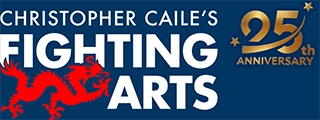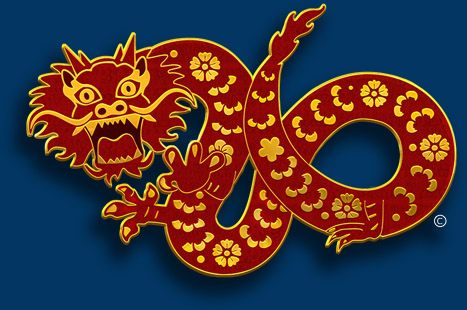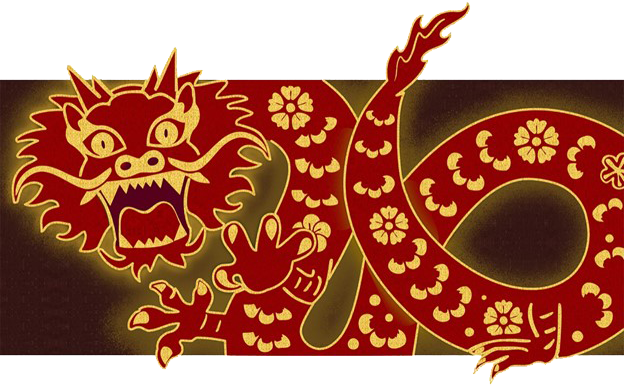Jujutsu: The Evolving Art
Part 2 – Adjunct To Classical Weapon Systems
By Tom Ross & Christopher Caile
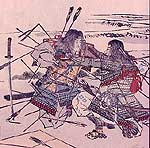 Understanding the historical development of jujutsu helps explain the wide diversity of jujutsu systems. In Japan the warrior (military) class of samurai (bushi) were usually highly skilled in the use of several weapons, and it was through these weapons that the outcome of battle was decided, the most common being the sword.
Understanding the historical development of jujutsu helps explain the wide diversity of jujutsu systems. In Japan the warrior (military) class of samurai (bushi) were usually highly skilled in the use of several weapons, and it was through these weapons that the outcome of battle was decided, the most common being the sword.
It is here, as an adjunct to swordsmanship, that techniques such as striking with the butt handle of the weapon, using the elbows and even strategically bumping an engaged opponent with the shoulder and torso entered into the syllabus of many weapons systems as techniques onto themselves. Also included were close quarter unarmed techniques and grappling methods, useful on the battlefield against an armed opponent, or equally unarmed foe.

"It is recorded during the reign of the emperor Suinin in the year 23 B.C. Taema no Kuehaya (who was described as a noble of great strength and stature) fought Nomi no Sukune of Izumo province. During the course of this ferocious battle Nomi delivered a monstrous kick to the ribs of Taema (breaking them) and knocking him down. Nomi then finished him with a bone crushing stomp on Taema's hip. An injury Taema would die from a day later." (1)
In the interm sumo played no small part in the martial development of Japan, and eventually received imperial patronage (during the Nara period 710 to 794 A.D.). Although many of its techniques were be known by imperial officials and military men, Sumai was not the type of combat method which directly lent itself to deal with the rapidly evolving and improving methods of combat, such as the armored sword wielding adversary. It did, however, likely provide a suitable platform for modification, and no doubt inspired the art of Yoroi Kumi Uchi (grappling in armor).
Heavily armored Samurai were somewhat restricted in mobility and speed of foot movement. Also they were virtually impervious to weaponless strikes since armor covered virtually their whole body. Empty hand jujutsu techniques were restricted to grappling, pushing, tripping and throwing, although some systems did practice empty hand strikes to specific areas that were not well protected by armor, such as under the arms. Samurais were also sometimes trained in intercepting weapon strikes and in the use of small weapons. The later could often pierce armor or be aimed between small gaps in armor.

Yoroi Kumi Uchi is a general term that applies to the various arts used by the Samurai whenever he found himself unable to use his primary weapon. This is not to say that without his primary weapon the samurai was unarmed, for many techniques existed within the repertoire for restraining or immobilizing an individual in preparation for a "Coup de Grace" to an appropriate weak point, and usually delivered by a secondary weapon such as the Yoroi Doshi (armor piercing dagger).
(1) The reign of Suinen was from 29 B.C. to 70 A.D.
| Part 1 | Introduction and Overview |
| Part 2 | Adjunct To Classical Weapon Systems |
| Part 3 | Unarmed Jujutsu Systems, Daito Ryu & Aikido |
| Part 4 | Other Jujutsu Derivatives: Judo & Gracie Jujutsu |
Tom Ross
Tom Ross is a retired NYC Correction Officer who specialized in the Handling of Security Risk group prisoners. A Yudansha under Ashihara karate (current affiliation) and in Shorinjiryu Kenzenkai Karatedo (an Offshoot of the Shorinjiryu Kenkokan founded by Masayoshi Hisataka), he also spent six years studying Jujutsu (classical, modern and Brazilian). Possessing an avid interest in the history of martial arts and traditions he currently serves as the Research Coordinator for FightingArts.com as well as moderating its Martial Arts Talk forum. He additionally serves as the moderator of the Sabaki List (which is dedicated to various martial artists and full contact stylists) and is a member of the International Hoplology Society.
About the Author Christopher Caile
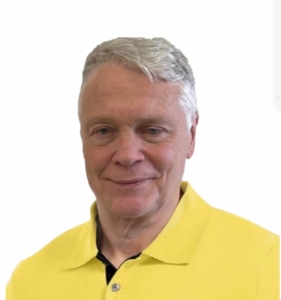
Screenshot
Christopher Caile is the Founder and Editor-In-Chief of FightingArts.com. He has been a student of the martial arts for over 65 years.
He first started in judo while in college. Then he added karate as a student of Phil Koeppel in 1959 studying Kempo and Wado-Ryu karate. He later added Shotokan Karate where he was promoted to brown belt and taught beginner classes. In 1960 while living in Finland, Caile introduced karate to that country and placed fourth in that nation's first national judo tournament.
Wanting to further his karate studies, Caile then hitch hiked from Finland to Japan traveling through Scandinavia, Europe, North Africa, the Middle East and South and Southeast Asia — living on 25 cents a day and often sleeping outside.
Arriving in Japan (1962), Caile was introduced to Mas Oyama and his fledgling full contact Kyokushinkai Karate by Donn Draeger, the famous martial artist and historian. Donn also housed him with several other senior international judo practitioners. Donn became Caile's martial arts mentor, coaching him in judo and introducing him to Shinto Muso-ryu under Takaji Shimizu.
Caile studied at Oyama's honbu dojo and also at Kenji Kurosaki's second Tokyo Kyokushinkai dojo. In his first day in class Oyama asked Caile to teach English to his chief instructor, Tadashi Nakamura. They have been friends ever since. Caile also participated in Oyama's masterwork book, "This Is Karate."
Caile left Japan with his black belt and designation as Branch Chief, the first in the US to have had extensive training in Japan directly under Oyama Sensei. As such, Oyama Sensei asked him to be his representative on visits to his US dojos to report on their status.
A little over a year later, Nakamura, Kusosaki and Akio Fujihira won an epic David vs. Goliath challenge match against Thailand's professional Muay Thai Boxers in Bangkok, Thailand, thrusting Kyolushinkai and Nakamura into national prominence.
Back in the US Caile taught Kyokushinkai karate in Peoria, Il while in college and later in Washington, DC. while in graduate school. Durimg this time Shihan Nakamura had moved to New York City to head Kyokushinkai's North American Operation.
In 1976 when Kaicho Tadashi Nakamura formed the World Seido Karate organization, Caile followed. Living then in Buffalo, NY, Caile taught Seido karate and self-defense at the State University of New York at Buffalo (SUNY Buffalo) for over 15 years where he also frequently lectured on martial arts and Zen in courses on Japanese culture.
Caile moved to New York City in 1999 to marry Jackie Veit. He is now an 8th degree black belt, Hanshi, training in Seido Karate's Westchester, NY Johshin Honzan (Spiritual Center) dojo. In Seido Caile is known for his teaching of and seminars on kata applications. He also produced a 14 segment video series on Pinan kata Bunkai currently available to Seido members.
Caile is also a long-time student and Shihan in Aikido. He studied in Buffalo, under Mike Hawley Shihan, and then under Wadokai Aikido's founder, the late Roy Suenaka (uchi deshi under Morihei Ueshiba, founder of Aikido and was Shihan under Tohei Sensei). In karate, Suenaka (8thdan) was also an in-house student of the Okinawan karate master Hohan Soken.
Having moved to New York City, Caile in 2000 founded this martial arts educational website, FightingArts.com. Twenty-five years later, in 2025, it underwent a major update and revision.
For FightingArts.com and other publications Caile wrote hundreds of articles on karate, martial arts, Japanese art, Chinese Medicine and edited a book on Zen. He also developed relationships with a cross section of leading martial arts teachers. Over the last four decades he has conducted extensive private research into karate and martial arts including private translations of the once secret Okinawan hand copied and passed on Kung Fu book, the Bubishi, as well as an early karate book by the karate master Kenwa Mabuni. He periodically returns to Japan and Okinawa to continue his studies and participate Seido karate events. In Tokyo he practiced (with Roy Suenaka Sensei) in a variety of aikido organizations with their founders – including private interviews and practices at the Aiki-kai Aikido Honbu dojo with the son and grandson of aikido's founder, Doshu (headmaster) Kisshomaru (an old uchi-deshi friend) and his son, Moriteru Ueshiba and in Iwama with Morihiro Saito. On Okinawa he studied Goju Ryu karate under Eiichi Miyazato, 10th dan founder of Naha's Jundokan, and also with Yoshitaka Taira (who later formed his own organization, who specialized in kata Bunkai. While there Caile also trained with Hohan Soken's senior student, Master Fusei Kise, 10 dan as well as with the grandson of the legendary karate master Anko Itosu.
Caile's other martial arts experience includes: Diato-ryu Aikijujitsu and Kenjitsu, kobudo, boxing, Muay Thai, MMA, Kali (empty hand, knife and bolo), study of old Okinawan Shoran-ryu & Tomari body mechanics, study of old Okinawan kata under Richard Kim, study of close quarter defense and combat, including knife and gun defenses, Kyusho Jitsu and several Chinese fighting arts including 8 Star Praying Mantis, Pak Mei (White Eyebrow), and a private family system of Kung Fu.
Caile is also a student of Zen as well as a long-term student of one branch of Traditional Chinese Medicine, Chi Kung (Qigong). As one of two senior disciples of Chi Kung master Dr. Shen (M.D., Ph.D.) Caile was certified to teach and practice. This led to Caile's founding of the The Chi Kung Healing Institute on Grand Island, NY. In Western NY, he also frequently held Chi Kung seminars, including at SUNY Buffalo and at the famous Chautauqua Institution in Chautauqua, NY. His articles on Chi Kung also appeared in the Holistic Health Journal and in several books on alternative medicine.
Caile holds a BA in International Studies from Bradley University and MA in International Relations with a specialty in South and Southeast Asia from American University in Washington, D.C. While in Buffalo, NY he also studied digital and analog electronics.
In his professional life Caile also worked in public relations and as a newspaper reporter and photographer. Earlier he worked in the field of telecommunications including Managing a Buffalo, NY sales and service branch for ITT. He then founded his own private telephone company. This was followed by creation of an electrical engineering company that designed and patented his concept for a new type of low-cost small business telephone system (which was eventually sold to Bell South). The company also did contract work for Kodak and the US space program. Simultaneously Caile designed and manufactured a unique break-apart portable pontoon boat.
Most recently Caile co-founded an internet software company. Its products include software suites with AI capability for control and management of streaming media, such as video and music, an all-in-one book publishing software product for hardcover, eBook and audio book creation and security software for buildings and government use.
For more details about Christopher Caile's martial arts, work experience and life profile, see the About section in the footer of this site.
Search for more articles by this author:
